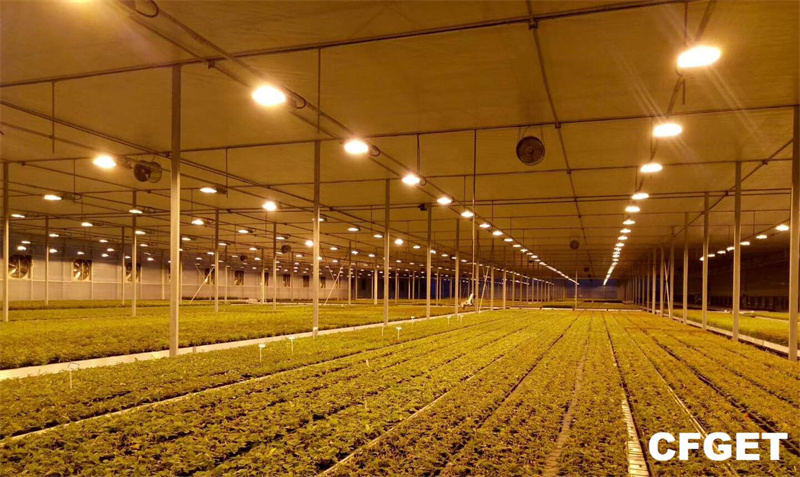In modern agriculture, greenhouses are a popular choice for efficient farming. However, even the most advanced greenhouses can't always rely on natural light alone to meet plant growth needs. That's where greenhouse supplemental lighting comes into play. In this article, we'll explain what greenhouse supplemental lighting is, its main functions, and when it's best to use it. Our goal is to help you elevate your greenhouse growing practices.

What is Greenhouse Supplemental Lighting?
Greenhouse supplemental lighting is a system that uses artificial light to enhance the natural light available to plants. It typically includes lights, controllers, and installation equipment. Common types of lights used are LED lights, fluorescent lights, and high-pressure sodium lights. These lights can mimic the natural light spectrum to meet plants' needs at different growth stages. By using supplemental lighting, growers can provide the right light environment regardless of natural light conditions, optimizing plant growth and yield

Functions of Greenhouse Supplemental Lighting
* Compensate for Lack of Natural Light: Natural light levels vary with weather, seasons, and location. On cloudy days or during winter, natural light might be insufficient for plants. Supplemental lighting provides additional light to fill this gap, ensuring plants get enough light to stay healthy and grow well.
* Boost Plant Growth and Yield: Plants need ample light for photosynthesis. Supplemental lighting can provide a full spectrum of light, including key red and blue wavelengths, which enhances photosynthesis and promotes growth. By increasing light duration and intensity, supplemental lighting can significantly boost plant yield and help you achieve better production goals.
* Optimize Plant Growth Cycles: The growth cycle of plants directly impacts their yield and quality. With the right setup, supplemental lighting allows you to adjust light intensity and timing to optimize plant growth cycles. This means plants can continue growing even in low light conditions and extend their growth periods, improving overall economic benefits.
* Enhance Plant Quality: Beyond promoting growth, supplemental lighting can improve the quality of plants. Adjusting light spectra and intensity can enhance nutritional content, flavor, and appearance. For example, some systems are designed to boost flower color and fruit sweetness, making plants more competitive in the market.

When to Use Supplemental Lighting?
* Insufficient Natural Light: Use supplemental lighting when natural light is inadequate, such as during cloudy weather, winter, or in northern locations. This ensures plants receive enough light to maintain healthy growth.
* High Plant Density: In high-density greenhouses, plants may block light from each other. Supplemental lighting helps solve this problem by providing even light distribution, ensuring every plant gets adequate light and increasing overall yield.
* Special Plant Needs: Some plants, like lettuce and strawberries, require more light. Supplemental lighting can meet these specific needs, optimizing their growing environment and enhancing both quality and yield.
* Extended Production Cycles: If you want to adjust light cycles to lengthen production periods or increase economic benefits, supplemental lighting allows precise control over light timing and intensity, improving production efficiency.
How to Choose and Install Supplemental Lighting
* Choose the Right Light Source: Different light sources have various advantages. LED lights are popular due to their efficiency, long life, and adjustable spectrum. High-pressure sodium and fluorescent lights are also common but may not offer the same efficiency or spectrum range. Choose based on your plant needs and budget.
* Determine Light Intensity and Spectrum: Understanding your plants' light requirements is crucial. Different plants and growth stages need different light intensities and spectra. Ensure your supplemental lighting system provides the right conditions to optimize growth and yield.
* Plan Your Layout: The arrangement of light sources is crucial for effective lighting. Distribute lights evenly to avoid uneven light distribution. Adjust the height and angle of the lights based on plant growth to achieve the best lighting results.
* Installation and Maintenance: When installing supplemental lighting, secure the lights properly and adjust settings as needed. Regularly check and maintain the system to ensure it operates efficiently and lasts longer.
Greenhouse supplemental lighting plays a key role in modern farming, addressing light insufficiency issues and improving plant growth and production efficiency. By carefully selecting and installing supplemental lighting, you can create the ideal environment for your plants, optimize management, and enhance economic returns. If you have any questions or need further assistance, feel free to reach out. We're here to provide expert advice and support.
Email: info@cfgreenhouse.com
Phone: (0086) 13550100793
Post time: Sep-21-2024







 Click to Chat
Click to Chat